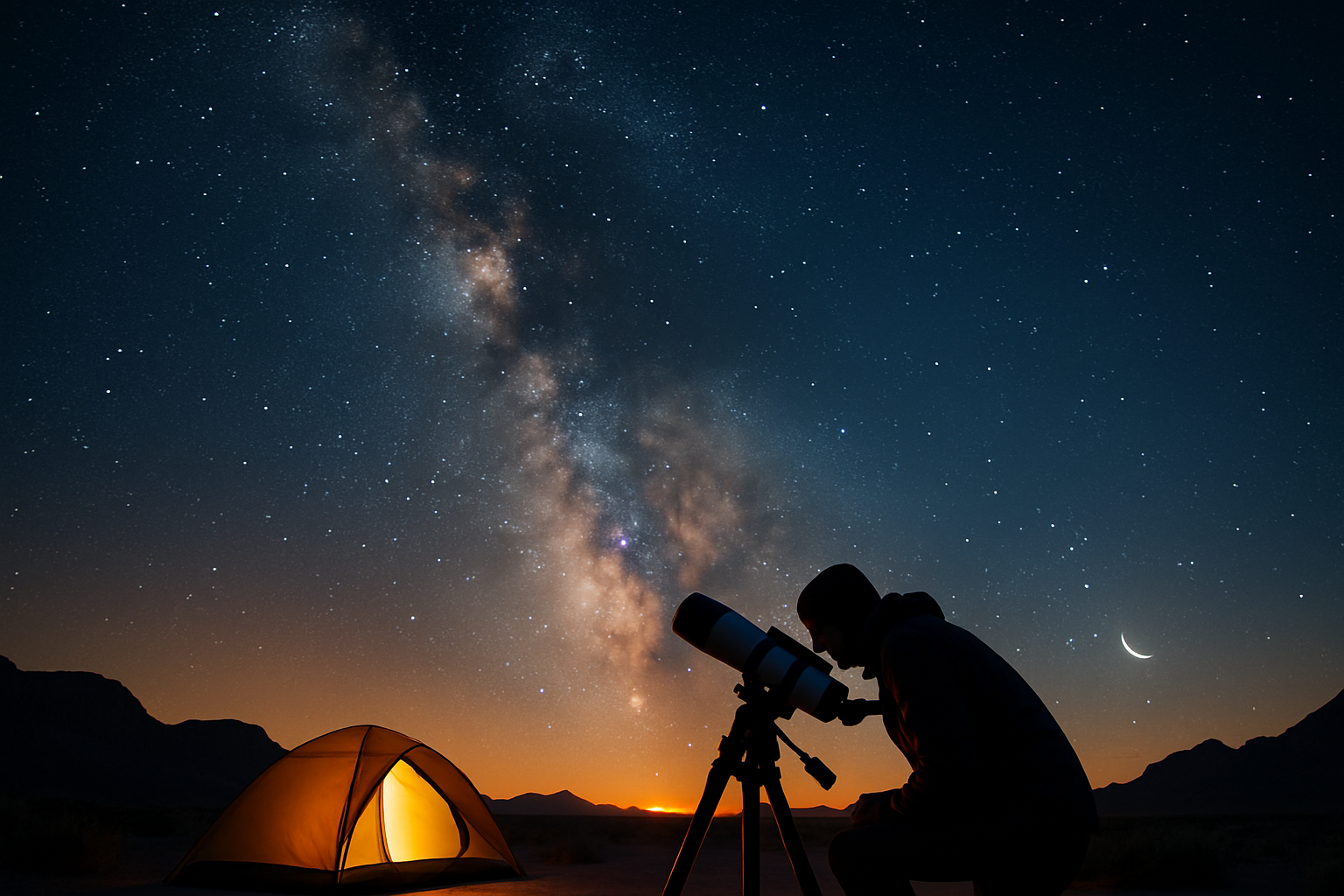Astrotourism: Exploring the Cosmos from Earth's Dark Sky Destinations
In an era where light pollution obscures our view of the celestial wonders above, astrotourism emerges as a captivating travel trend. This niche form of tourism invites stargazers, amateur astronomers, and curious travelers to venture into remote, dark sky destinations for unparalleled views of the cosmos. From tracking meteor showers to marveling at the Milky Way, astrotourism offers a unique blend of science, adventure, and natural wonder, transforming how we experience both our planet and the universe beyond.

Dark sky destinations, often located in remote areas far from city lights, have become hotspots for this celestial tourism. These locations, certified by organizations like the International Dark-Sky Association (IDA), offer pristine views of the night sky, allowing visitors to see stars, planets, and cosmic phenomena that are often invisible from more populated areas.
Dark Sky Destinations Around the World
Astrotourism has led to the development and promotion of numerous dark sky destinations globally. Some notable locations include:
Atacama Desert, Chile: Known for its exceptionally clear skies and high altitude, the Atacama Desert is home to several world-class observatories and offers unparalleled stargazing opportunities.
NamibRand Nature Reserve, Namibia: Africa’s first International Dark Sky Reserve, NamibRand combines stunning desert landscapes with spectacular celestial views.
Pic du Midi, France: This mountain-top observatory in the French Pyrenees offers visitors the chance to spend the night above the clouds, enjoying professional-grade telescopes and astronomy talks.
Aoraki Mackenzie International Dark Sky Reserve, New Zealand: The world’s largest dark sky reserve, this area in New Zealand’s South Island provides breathtaking views of the southern night sky.
The Impact on Local Communities and Conservation
Astrotourism has proven to be a boon for many rural and remote communities. By attracting visitors during nighttime hours, it has created new economic opportunities and extended the traditional tourist season. Many dark sky destinations now offer specialized accommodations, guided tours, and educational programs centered around astronomy.
Moreover, the rise of astrotourism has had a positive impact on conservation efforts. The need to preserve dark skies has led to increased awareness about light pollution and its effects on wildlife, human health, and energy consumption. Many communities and protected areas have implemented lighting policies to maintain their dark sky status, benefiting both visitors and local ecosystems.
Challenges and Considerations
While astrotourism offers numerous benefits, it also presents challenges. The influx of visitors to remote areas can potentially harm fragile ecosystems if not managed properly. Additionally, the development of infrastructure to support tourism must be balanced with the need to preserve dark skies.
Weather dependency is another significant factor in astrotourism. Clear skies are essential for optimal viewing, which can make trip planning challenging and potentially disappointing for visitors if conditions are unfavorable.
The Future of Astrotourism
As interest in astrotourism continues to grow, we can expect to see further development in this niche market. Innovations in telescope technology, mobile astronomy apps, and astrophotography equipment are making the night sky more accessible than ever to amateur stargazers.
The future may also see the integration of astrotourism with other forms of sustainable and educational tourism. For example, combining stargazing with wildlife watching, cultural experiences, or geology tours could create more comprehensive and enriching travel experiences.
Stellar Travel Tips for Aspiring Astrotourists
• Plan your visit around celestial events like meteor showers or lunar eclipses for an enhanced experience
• Bring warm clothing, even in summer, as temperatures can drop significantly at night
• Allow time for your eyes to adjust to the darkness – it can take up to 30 minutes for full dark adaptation
• Consider investing in a red-light headlamp to preserve your night vision while navigating in the dark
• Learn basic constellations or download a stargazing app to help identify celestial objects
• Check the lunar calendar – a new moon offers the darkest skies for optimal star viewing
Astrotourism represents a unique convergence of science, nature, and travel, offering a profound way to connect with the universe and our place within it. As we continue to explore and protect Earth’s remaining dark sky destinations, we not only preserve our ability to wonder at the cosmos but also foster a deeper appreciation for the natural world and the importance of conservation. Whether you’re a seasoned astronomer or simply curious about the night sky, astrotourism provides an unparalleled opportunity to expand your horizons and gain a new perspective on our planet and the vast universe beyond.





